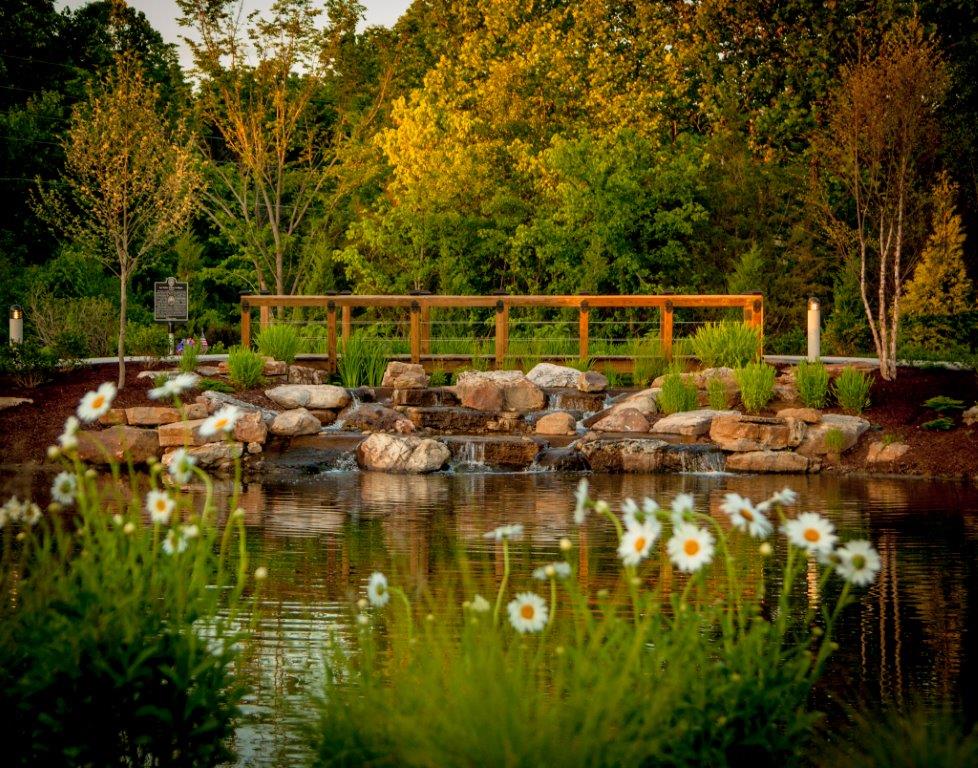A “natural” landscape design can mean something different to everybody. To many, it can mean incorporating only native plants into the design. Others interpret the thought of a natural landscape to be more rustic, and an extension of its surroundings. Recently, I wrote about a modern landscape design, so in turn, this article will focus on naturalistic landscape design.
Our goal, when designing for a client who is wanting a natural-looking landscape, is not to directly mimic the surroundings, but to blend the landscape into the environment of mid-Missouri. It takes inspiration from nature, while combining different design styles. Designers aim to interpret the beauty of nature, and translate that into your backyard.
A successful design, will have purposely placed plant and hardscape materials, following the basic principles of design. Material choices can include Missouri-hardy plants, weathered, mossy boulders, and rustic stone. While nature is not rigid, it is not completely random either. Organic shapes (beds or plants), plant massing, and softer, asymmetrical arrangements, are some of the major considerations when designing in this style.
Another important concept is to work within the existing environment. In some cases, the property has already been manipulated because landscapers come into the project after construction. A good designer can incorporate their design and enhance it, by using what is already there, such as trees or the topography. It’s hard to create a natural look on a perfectly grade property so make sure to talk to a designer early.
A common misconception, is that we must design with exclusively native plants to accomplish a naturalistic landscape, but that is not the case. Native plants are obviously hardy, but they can also be invasive, informal, and can truly limit your options. Horticulturist did not spend centuries breeding inferior plants; quite the opposite, most new cultivars are superior to their native backgrounds.
We are told natives are less maintenance and take less water, but that’s not always the case. They can be, if you are willing to accept a truly native environment along with its weeds and dormant appearance during dry periods. However, most of us aren’t. In landscapes we maintain, the vast majority of truly native plantings take more time and money to maintain in an acceptable state for the owner. Even with high levels of maintenance, they still go through seasons of beauty and seasons that aren’t quite so beautiful. One of the largest 100% native xeriscapes ever completed in Boone county is a prime example. The idea sounded good, but in reality, it was just too much to maintain and quickly became out of control. After years of trying and lots of money spent, it was finally converted back to lawn and traditional landscape.
Native plants thrive and reproduce in very specific environments and is more complex than we could recreate or maintain. This does not mean we are anti-native. It just means, nothing is that easy.
So, instead, focus on a “native-like” landscape, utilizing both natives and cultivars to create a natural landscape you can know will thrive, and you can enjoy it all year, for years to come.

